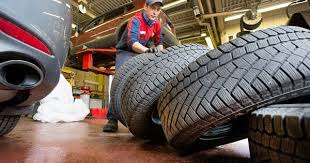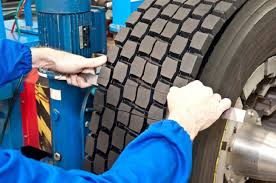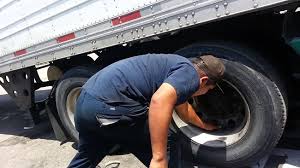Secret Tips To Buy Truck Tires and Save Money
One of the things I tend to always stress is safety. This is one of the most important things any operation should consider. With that in mind the other key consideration is of course, proper maintenance of all equipment.
Your vehicles and trailers should always have a regularly followed maintenance schedule. Your drivers should always conduct checks of their trucks. Safety and maintenance, these two things are very important!
Some of the larger shops are able to have a proper maintenance support staff available on hand. It is their responsibility to ensure they conduct proper inspections. However it is also the driver’s responsibility to inspect his/her truck and to report any deficiencies found.
Smaller shops might have to set up a contract with other service centers to handle maintenance needs. That makes it all the more vital that they keep a close eye on their equipment. What might appear to be a small issue, can grow into a large problem if not taken care of right away.
This brings us to a key factor, where the rubber meets the road. That right, your tires. People often don’t think about them. Sure they check the oil, fuel, radiator and other fluids. But your tires are the number one thing you should check every time you (or your driver) stop.
What are you checking for?
- Uneven tread wear, the tread is more worn on the edges or in certain spots
- Shallow tread, your tire tread should be at least 1/16 of an inch deep.
- Check in the treads for nails, sharp rocks, broken glass
- Damaged areas like tears, cracks, bubbles

Tire Pressure
One of the most crucial ways to save money on your truck is to keep your tires properly inflated. By checking your tires monthly, you could save a noticeable amount of fuel and money. Always check the spare tire, too.
Unbalanced tires lessen your control of the vehicle. The tires will also wear unevenly and even prematurely if not equal to their counterparts.
There is a common misconception that you should run with different tire pressure, depending on the season. Always keep your tires inflated to the manufacturer’s suggested pressure. You should check the pressure often regularly, but even more often in colder temperatures.
Remember that a cold tire may cause your car’s computer to flash a “low tire pressure” symbol. If this occurs, visually inspect your tires, and if they appear normal, chances are that the sensor has misread the inflation, due to the weather.
Tire Mounting and Balancing
Tire Mounting and BalancingTire mounting and balancing are commonly required services for vehicles. Tires are expensive units themselves, so it is important to keep them in top condition so that they last.
Keeping your tires balanced directly correlates with how often you will need to replace them. Whether you are buying new tires or simply need a tire rotation, your tires should have the correct balance.
Tire balancing ensures the weight of your vehicle is distributed equally on the axle. When your tires are out of balance, your vehicle produces a lower-quality ride, and it wears down the suspension.
The benefits of good tire upkeep can save money for a commercial business in the long run. With properly executed balancing and mounting, money is saved through tires, fuel and the inevitable repairs that come from neglected maintenance. These services for commercial businesses, as well as electronic and dynamic tire balancing, are crucial for a working fleet.

Here are the things you need to see if you are looking to purchase tires online:
- Durability: The basic requirement when buying a tire is durability. Everybody wants value for his or her hard-earned money and many people perceive it through the resilience of the product. It is justified too, because if a tire does not last long enough to recover its costs and help make a profit, then it’s not a good deal. As such, you should go through various brand reviews online and choose the one that you think is durable enough for your particular business.
- Cost: Cost is certainly a high priority because the choice of the right tire depends on the budget. This is another reason why people purchase used tires. However, though budget is important, it is certainly not worth more than your safety. Thankfully, there are various deals available online that help you get the right tires within your budget.
- Comfort versus Endurance: People often find themselves in a dilemma choosing the correct truck tires such as 11R22.5 or 11R24.5 and etc… Soft tires provide more traction and grip while hard tires are more durable. If faced with this situation, you should try to maintain a balance between these two aspects. Most online sites let you specify the parameters as per your needs and give you the options that let you select and buy the tires you prefer.
- Climate: Choosing the perfect tire also depends on the weather conditions. Soft tires can easily expand and contract in changing weather conditions where as in long haulage on highways it is always better to choose hard tires. Many high-quality tires are available at online websites that stock the most durable and renowned brands that can withstand the climate and the test of time.
- Technicalities: You should know your tire before buying it. Make sure that the websites have all specifications you need for selecting the correct tire. Technical information you need to check includes maximum speed, load capacity, heat durability and proportion specs. Most of these details are provided on the side of the tires in the form of a code that is easily understandable. You can also use the picture of the tire on the site to understand the tire’s capabilities and make your selection.

Truck Lift Kits: What’s the Right Height for Your Lift?
If you’re thinking about lifting your truck, the next question often boils down to how high are you willing to go? Lift kits come in all different sizes, including smaller kits that lift your truck by about two inches, all the way up to large lift kits that raise your truck by as much as ten inches or more. While just a few inches might not sound like that much of a difference, there are plenty of considerations to keep in mind. Run through our truck lift kit checklist to find the right height for your lift.
Choosing the Right Height for Your Lift:
Check Your Make and Model
Different makes and models come with their own suspension specifications and requirements. Some vehicles may come with certain limitations in terms of lifting. Depending on the make and model, you may need to invest in additional modifications if you choose a higher lift, such as extended brake lines, new steering components, and more. Make sure you know what’s involved with installing your new lift kit before you settle on a height.
Diving and Performance Considerations
Lift kits give you more ground clearance, but how much more clearance you need really depends on where you plan on driving. If you’re really tearing up the outdoors, driving over rock formations and through remote forests, a slightly larger kit may come in handy.
If you still want to use your truck for everyday errands and getting to and from work, you’re probably better off with a smaller lift or even some leveling kits for a slight height increase in the front. Larger lifts will start to deplete your trucks’ fuel economy. It can also alter the center of gravity, which can make turning a little trickier. If you want to retain a factory-like ride quality, stick with a smaller lift.
Making Room for New Tires
Many folks invest in lift kits, so they can make room for larger tires. The size of your lift kit also depends on how large you want these tires to be. You should be able to make room for some 37-inch tires with a smaller lift kit, but, if you want to go even bigger, you’ll probably need a larger lift kit. Some people love driving a truck with massive tires that eat up the road, but, if you prefer a more traditional driving experience, less is more when it comes to your lift.
Set Your Budget
Another consideration to keep in mind is how much you’re willing to spend. As you might’ve guessed, larger lift kits tend to be more expensive than their smaller counterparts. The higher you raise your vehicle, the more you’ll need to spend on additional modifications, such as new steering components, brake line extensions, and other accessories and upgrades. The kit itself will also be more expensive, usually costing around several thousand dollars.
Driving Experience
Another factor to consider is how comfortable you feel driving a lifted truck. Raising the body of your vehicle by more than a couple inches can get you into trouble in terms of the overall performance and drivability of your truck. Unless you’re well-versed in the world of vehicle lifts, it’s best to start small and work your way up to a larger lift.
Starting with a two-inch kit is a great way to learn more about the lifting process and how it feels to own and drive a lifted truck. If you go too large too fast, you might run into some problems down the road. You can always upgrade to a large lift later on.
Read Up on State and Local Laws
Last, but not least, choosing the right height for your lift might not be solely your decision. Some states and cities have strict laws regarding vehicle suspension. If you raise your truck too much, you could be in violation of some of these laws, which will limit you in terms of where you can use your new lifted truck. If you want complete freedom on the road and more peace of mind knowing that you’re not violating any laws, you’ll be better off with a smaller lift kit. Research the vehicle suspension laws in your area to get a better idea of what your options are.